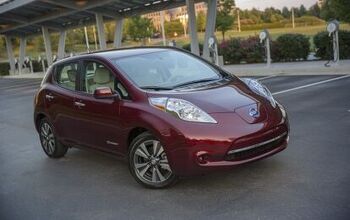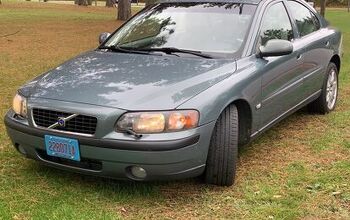Mitsubishi Might Share Future Pickup Platforms With Nissan

Mitsubishi Motors needs a pickup truck for the U.S. and Nissan wants a cheaper one for the global market. While the Red Diamonds’ Raider filled a ten year gap in the company’s lineup after the American discontinuation of the Mighty Max in 1996, sales were disappointing and production ended back in 2009. Now Mitsubishi and its new parent Nissan are investigating joint production of pickup trucks in Southeast Asia as they hunt for savings within the Renault-Nissan partnership.
The two Japanese automakers may combine the technical basis and eventual production of the future replacements for the South Asian-built Nissan Navara and Mitsubishi Triton, Mitsubishi chief operating officer Trevor Mann said in an interview at the Geneva car show.
“If you look at our cost performance in that region, we are the benchmark within the alliance,” Mann told Reuters. “Our four-by-four technology, our cost base on pickups is better than Nissan’s.”
That means Mitsubishi’s pickup architectures are likely to underpin subsequent Nissan models, said Mann, who was assigned by alliance head Carlos Ghosn to turn the failing Mitsubishi around after Nissan dropped $2.3 billion for a 34 percent controlling stake last October.
While Nissan and Mitsubishi both produce frame-based pickups and cars, the vehicles have elemental manufacturing and design differences. Moving to shared architectures would allow the Mitsubishi factory to focus on pickups while the Nissan plant continues to produce cars and SUVs, increasing productivity and lowering costs for both brands, Mann said.
Although, he was also careful to say that nothing had been set in stone. The current Navara and Triton models were launched in 2014 and neither are due for replacement until 2022, meaning development decisions should still be a couple years away. However, under a common platform it might be easier to get Mitsubishi trucks back into other markets — maybe even the United States and Canada if the cooperative truck platform extends beyond Asian assembly.
[Image: Mitsubishi Motors]

A staunch consumer advocate tracking industry trends and regulation. Before joining TTAC, Matt spent a decade working for marketing and research firms based in NYC. Clients included several of the world’s largest automakers, global tire brands, and aftermarket part suppliers. Dissatisfied with the corporate world and resentful of having to wear suits everyday, he pivoted to writing about cars. Since then, that man has become an ardent supporter of the right-to-repair movement, been interviewed on the auto industry by national radio broadcasts, driven more rental cars than anyone ever should, participated in amateur rallying events, and received the requisite minimum training as sanctioned by the SCCA. Handy with a wrench, Matt grew up surrounded by Detroit auto workers and managed to get a pizza delivery job before he was legally eligible. He later found himself driving box trucks through Manhattan, guaranteeing future sympathy for actual truckers. He continues to conduct research pertaining to the automotive sector as an independent contractor and has since moved back to his native Michigan, closer to where the cars are born. A contrarian, Matt claims to prefer understeer — stating that front and all-wheel drive vehicles cater best to his driving style.
More by Matt Posky
Latest Car Reviews
Read moreLatest Product Reviews
Read moreRecent Comments
- Redapple2 I think I ve been in 100 plants. ~ 20 in Mexico. ~10 Europe. Balance usa. About 1/2 nonunion. I supervised UAW skilled trades guys at GM Powertrain for 6 years. I know the answer.PS- you do know GM products - sales weighted - average about 40% USA-Canada Content.
- Jrhurren Unions and ownership need to work towards the common good together. Shawn Fain is a clown who would love to drive the companies out of business (or offshored) just to claim victory.
- Redapple2 Tadge will be replaced with a girl. Even thought -today- only 13% of engineer -newly granted BS are female. So, a Tadge level job takes ~~ 25 yrs of experience, I d look at % in 2000. I d bet it was lower. Not higher. 10%. (You cannot believe what % of top jobs at gm are women. @ 10%. Jeez.)
- Redapple2 .....styling has moved into [s]exotic car territory[/s] tortured over done origami land. There; I fixed it. C 7 is best looking.
- TheEndlessEnigma Of course they should unionize. US based automotive production component production and auto assembly plants with unionized memberships produce the highest quality products in the automotive sector. Just look at the high quality products produced by GM, Ford and Chrysler!


































Comments
Join the conversation
I think this is more about the world market than the US. I don't understand why Nissan doesn't just pull the plug on Mitsubishi here; unless there is some real financial wizardry going on in Mitsu's production lines that make those products profitable, there's just no point in continuing to sell them in the US.
"While the Red Diamonds' Raider filled a ten year gap..." Even then, it was just a workup of a Dakota, built right in Michigan. Not much Mitsubishi about it.